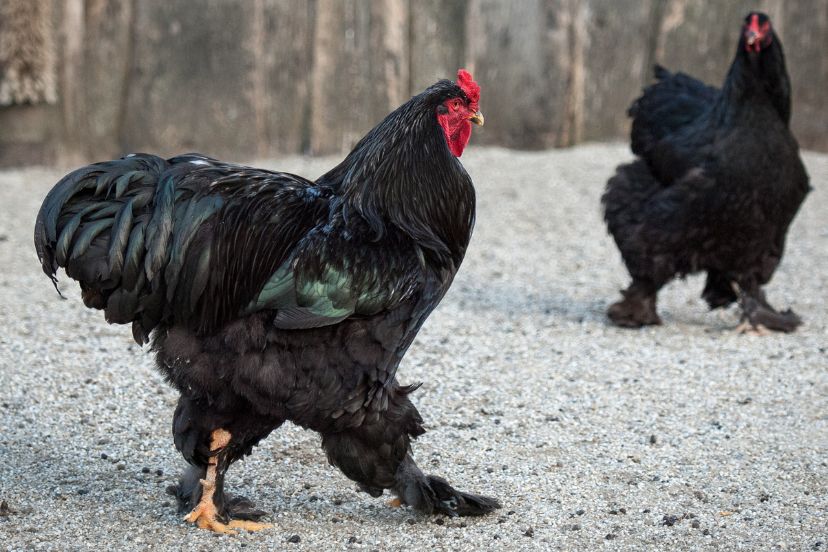10 Giant Chicken Breeds
Ever heard the phrase “bigger is better?” Well, when it comes to chickens, this might just hold some truth! Giant chicken breeds are not only eye-catching but also come with unique advantages.
Why Choose Giant Chicken Breeds?
Trust me; these breeds are hard to miss! With some weighing up to 15 pounds, their sheer size and impressive stature stand out in any flock. Their grandeur is like the skyscrapers of the poultry world. Wouldn’t you love having such striking birds in your backyard?
You might think that their bigger size means bigger eggs. Well, you’re spot on! These breeds tend to lay larger eggs, and the sheer size of the eggs is a breakfast treat in itself.
Also, most giant chicken breeds are incredibly gentle and docile, making them excellent for families. It’s like having gentle giants in your backyard.
Popular Giant Chicken Breeds
| Height | Weight | |
| Orpington | 16 inches | 8-10 pounds |
| Australorp | 17 inches | 8-10 pounds |
| Cornish | 16 inches | 10-11 pounds |
| Cochin | 15-22 inches | 8-11 pounds |
| German Langshan | 24-32 inches | 6.5-9.5 pounds |
| Maline | unknown | 9-12 pounds |
| Brahma | 30 inches | 8-12 pounds |
| Dang Tai | unknown | 10-13 pounds |
| Malay | 26-36 inches | 9-11 pounds |
| Jersey Giant | 16-26 inches | 11-15 pounds |
Orpington
Orpington hens can proudly tip the scales at a notable 8 pounds. Their rooster counterparts aren’t far behind, weighing in at 10 pounds and boasting a stature of 16 inches. Their expansive bodies appear even more magnificent due to the ultra-fluffiness of their plumage. It’s like cuddling a feathery pillow when you embrace these gentle giants!
Keep an eye on their diet. Orpingtons have quite the appetite, and if not monitored, they can pack on extra pounds, leading to health complications and a halt in egg production. Other than that, expect a consistent delivery of 3-5 medium-sized eggs every week from the hens.
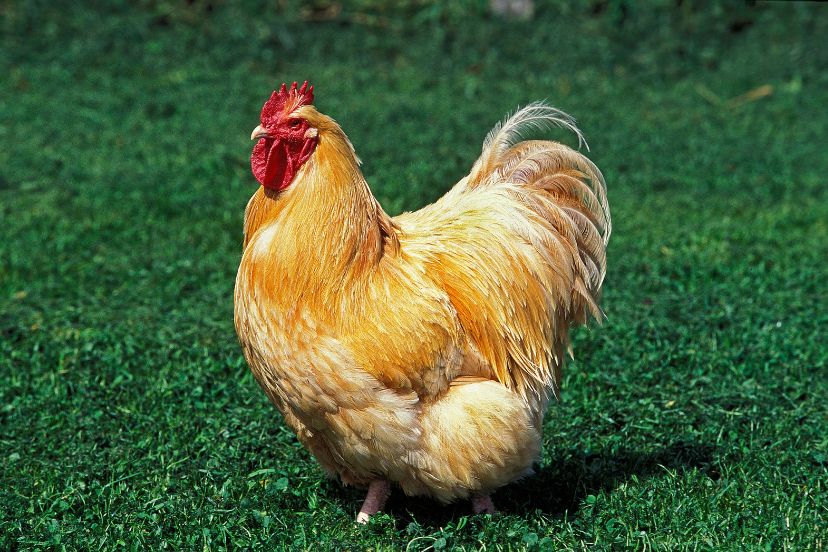
Orpingtons encompass everything one would wish for in a dual-purpose chicken.
Australorp
Mirroring the Orpington, Australorps are ideal for those new to poultry-keeping, but they stand a tad taller. Counted among the largest heritage breeds, they can tip the scales at a significant 8 pounds.
Initially, they might appear a bit reserved, but with patience, they’ll show their amiable nature. Taking the best traits of the Orpington, they elevate them, making them prolific egg producers. Such is Australia’s pride in the Australorp that they’ve crowned it as their National Chicken.
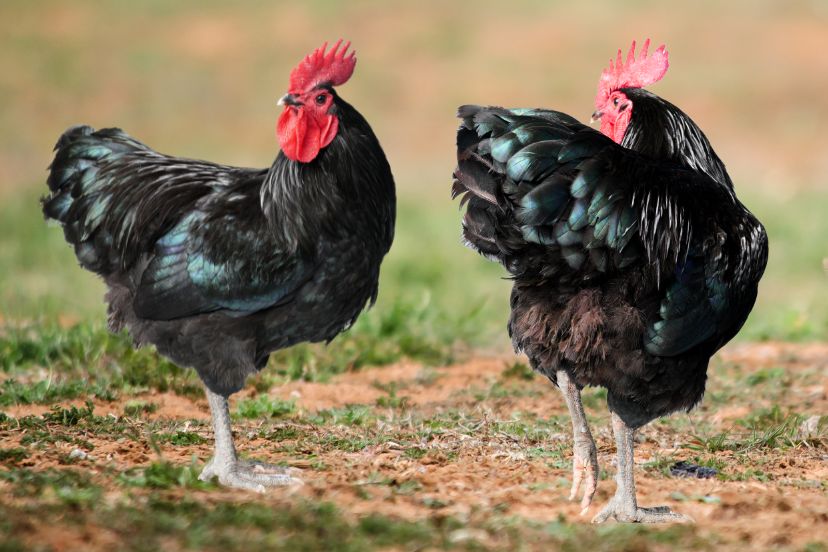
The Australorp is Australia’s answer to the popular English Orpington.
Cornish
The Cornish chicken may not boast the feathery expanse of the previously mentioned breeds, but it compensates with its robust physique. This breed is stout, showcasing a pronounced muscular structure with a succinct neck.
Even with their imposing size, their legs are notably short, complemented by a compact and broad body. A Cornish chicken requires about 7 months to mature to its peak weight of 11 pounds.
Cochin
Who could resist the charm of owning such an oversized, snuggly bird? Their plush plumage might give an illusion of them being even grander, but make no mistake; they are among the larger breeds. A Cochin can tip the scales at 11 pounds and stretch up to 22 inches in height.
While Cochins enjoy a widespread fan base, managing such a majestic creature isn’t everyone’s cup of tea. Being of a considerable size, they demand more room than their smaller counterparts. Plus, their hearty appetite might mean revising your feeding budget.
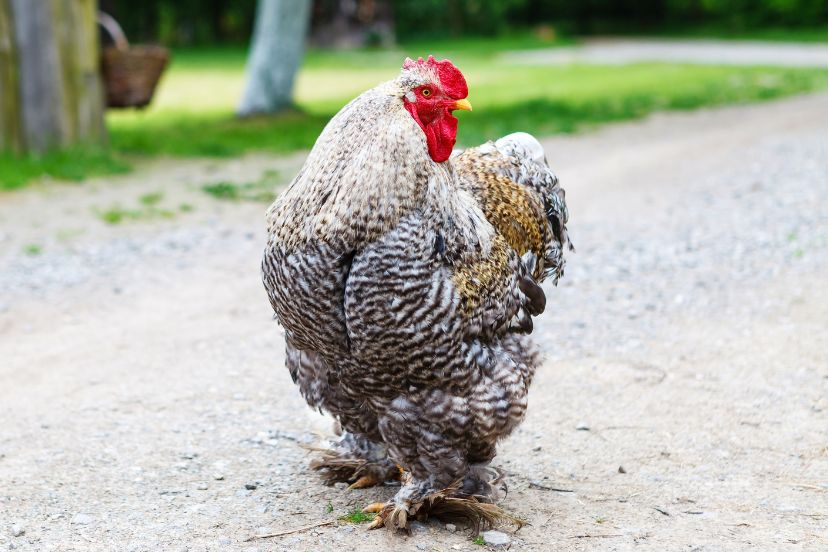
These gentle behemoths stand out with their impressive feathered volume.
German Langshan
Despite their elusive nature, German Langshan towers above the rest and remains a rare sight in the United States. Roosters of this breed can astonishingly stand up to 32 inches tall, claiming the silver spot for height on our list. The most robust German Langshan roosters tip the scales at around 9.5 pounds, with the hens weighing a tad less.
Their eggs lean towards the larger side, and given their consistent laying habits, the hens prove to be quite an asset for egg enthusiasts.
Maline
This striking Belgian-origin breed emerged from the union of the indigenous Flemish Cuckoo with various prominent chicken breeds in Belgium around the late 19th century. This lineage incorporated Langshans, Cochins, and Brahmas.
Surpassing expectations, the breeding initiative birthed a breed that astonishingly outgrew all its parent breeds in size. The heftiest Malines can tip the scale at more than 12 pounds!
Brahma
Brahmas are known as the gentle giants of the chicken world. They can weigh up to 10 pounds and reach 30 inches tall. But they smaller today than they were 100 years ago. There are tales of some roosters weighing up to 18 pounds. This earned them the nickname, King of Chickens.
Since the 1900s Brahmas have slowly shrunk. This is because farmers moved their time and resources into breeding faster-growing meat breeds instead like the Cornish Cross. As a result there was not as much effort put into maintaining the Brahmas’ gene pool.
Read our articles 5 Facts About Dark Brahma Chickens for more information.
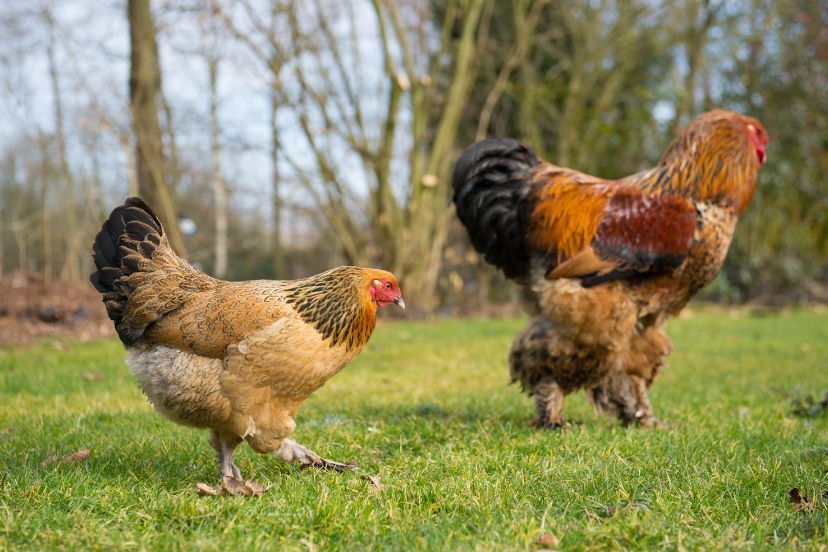
Even if they are smaller than they once were, modern Brahmas are still powerful and majestic chickens.
Dong Tao
The Dong Tao often referred to as the Dragon Chicken, was inspired by their impressively thick, reptilian-like legs, which can rival the girth of a person’s forearm. But it’s not just their legs that are hefty. Roosters can tip the scale at 13 pounds, while hens are not far behind at a commendable 10 pounds.
Hailing originally from Vietnam, the Dong Tao chickens were once the pride of ancient monarchs. Their regal history is reflected in their current price point, with a breeding pair setting one back around $2,500.
Malay
Malays, renowned as the loftiest chicken breed globally, have a distinct profile marked by an elongated body, lengthy legs, and an extended neck. This unique physique, granting some individuals the ability to tower over three feet, has earned them the affectionate nickname of the “Sky-Scraping Chicken.” Despite their slender appearance, roosters can tip the scale at 11 pounds, radiating an air of unmatched confidence, sometimes verging on boastfulness. This grandeur doesn’t shy them away from asserting their dominance over smaller breeds.
However, their impressive stature comes with its set of challenges. Regular nesting boxes often don’t suffice for the hens, posing difficulties in the brooding process. Hence, as a common solution, many Malay eggs find themselves in incubators, ensuring they hatch without complications.
Jersey Giant
The Jersey Giant takes the crown as the world’s largest chicken breed. With roosters and hens tipping the scales at an impressive 13-15 pounds and 11 pounds respectively, these colossal birds stand head and shoulders above many of their counterparts, with some of the most statuesque roosters measuring up to 26 inches.
Cultivating a Jersey Giant to its full potential demands patience and ample nourishment. But once they reach their prime, you can anticipate a steady supply of 2-4 eggs weekly from the hens.
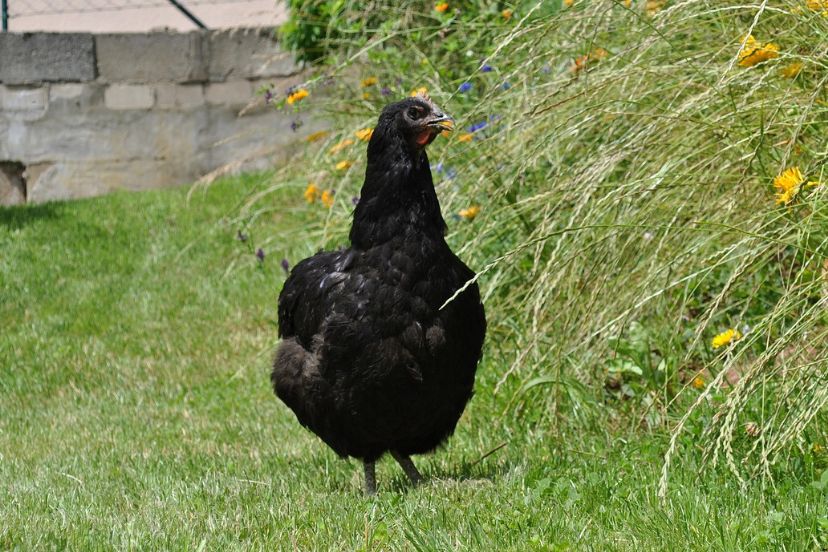
Giant Chicken Breeds Proper Care
Feeding and housing giant chicken breeds require special consideration given their colossal size. Just as you’d fuel a truck more than a car, these magnificent birds have heftier appetites demanding a well-balanced diet to ensure optimal health and happiness. However, nutrition is only one facet of their care. Their accommodations need to be proportionate to their stature. Imagine the discomfort of being squeezed into a space too small; that’s how these birds feel in standard-sized coops. Upgrading to larger coops and nesting boxes is essential for their comfort. In terms of health and wellness, their impressive size also comes with its unique set of challenges. Regular veterinary check-ups, timely vaccinations, and maintaining impeccable hygiene are crucial. Being proactive and vigilant in their care can help address and prevent potential health concerns unique to their breed.
Final Thoughts
These birds, given their grand stature, naturally have more extensive needs, which can be both a blessing and a challenge. For starters, their voracious appetites mean they’ll require significantly more food than your average chicken. This could strain one’s budget over time. Additionally, their sheer size demands larger living spaces, translating to bigger coops and more expansive free-ranging areas. Such requirements can be daunting for those with limited space or resources. Therefore, while they’re a spectacle to behold and can be rewarding to raise, they might not be everyone’s cup of tea, especially for those who are resource-conscious.
FAQs
How big can giant chicken breeds get? Some, like the Jersey Giant, can weigh up to 15 pounds or more!
Are giant chicken breeds aggressive? Contrary to their size, most are gentle and docile, making them great for families.
How much space do I need for giant chickens? More than your average breed. A spacious coop and run are essential for their well-being.
Do giant chickens eat more than regular breeds? Yes, due to their size, they generally consume more food.
Can I mix giant breeds with regular-sized chickens? Yes, but ensure there’s enough space and resources for all to prevent potential conflicts.

